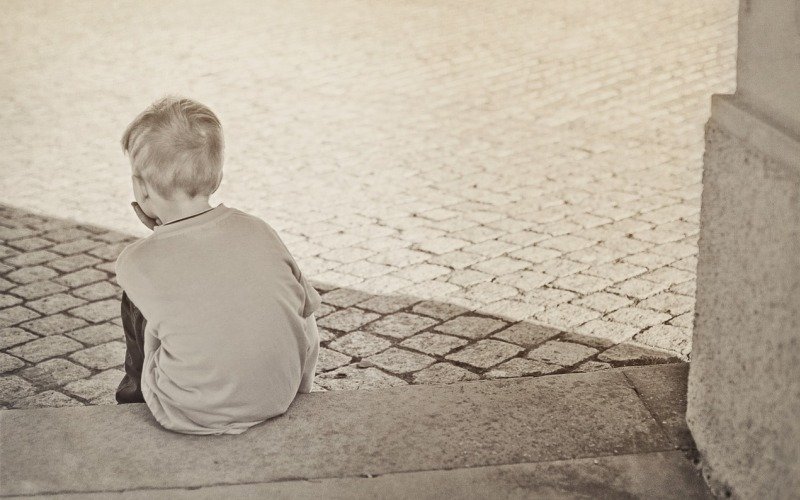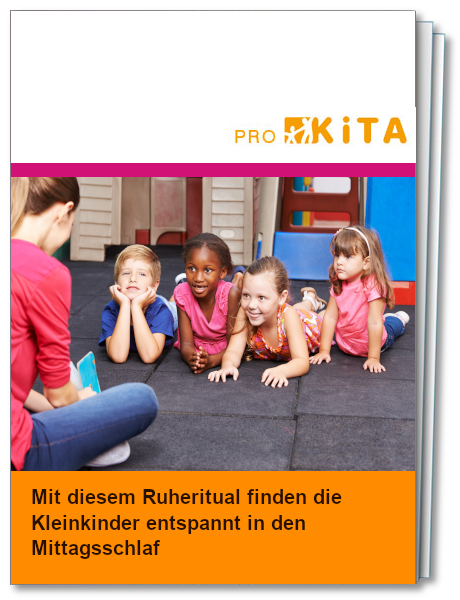Dr. Joachim Bensel

The cornerstone for a person’s social behavior is laid at birth. Babies first learn from adults, and with age they learn more from other children with whom they are around. Then they begin to imitate other children, to speak or speak to each other, to smile at each other and to offer or take toys from one another. Even if the children tend to play side by side at an early age, a lot is learned here that can be built upon in kindergarten. Children learn best and most from other children, which is why the age mix makes it easier and more tempting for children to keep taking new steps in their development.
The crucial cornerstone for positive social behavior is laid much earlier than is often assumed. From day one, the child learns to build stable relationships. Enabling and supporting this is an important task for us adults. Joachim Bensel describes how it all begins and how social competence develops.
To be able to watch two or more children in a harmonious, interrelated game is a beautiful sight. A successful game between two or more children is just as much a matter of course as a so-called good conversation between adults. A wide variety of developmental requirements must be met, the children must have reached a certain age, have basic social skills, and the environmental factors must be designed in such a way that they allow such harmonious play.
After the birth: The basics are laid
Let’s take a look at the early beginnings of children’s social behavior. The first important social partners for the child are usually the parents. Shortly after birth, they are the ones who first make eye contact with the newborn, an opportunity for contact that the infant eagerly takes. With a look and averted eyes, the young infant is able to show how much social contact he is feeling right now – even without words, only with his hands, his body and his facial expressions. Sensitive caregivers can interpret these signals accordingly and react to them. Incidentally, this empathy is the basic building block for a later secure bond between mother or father and child. At the beginning, the smile is still very unspecific and is brought up to every face that appears in the child’s field of vision. This so-called angel smile disappears very soon, and starts at the latest with 6 weeks his Make a real smile that is given to those who interact with the infant in a child-like manner: keep the right distance from him, raise your eyebrows, raise your voice, and more. This intuitive parenting behavior can also be shown by older siblings or other caregivers. The infant perceives differences very quickly. For example, he notices that his father is more physically stormy than his mother, who is usually more tender and careful. The first subdivisions into favorite partners for various activities begin here; for example, the father is "romping around" and the mother preferred when cuddling.
Different contacts
Adults are the clear favorites in all activities up to kindergarten age, but there is already interest in peers in children aged 6 to 12 months. With eye contact, smiles, vocalizations, playing side by side and mutual imitation, some building blocks are available very early on, with which interest in contact with peers can be expressed. If the infants are able to move close to their peers by turning, rolling, crawling or crawling, they are already making initial attempts to touch them. The first correct interactions take place, e.g. an object with which another child is playing is conquered; for infants and toddlers there is no morally reprehensible behavior. Ownership claims, rules that must be observed – you will only learn all of this later. But there are not only property disputes. Giving and taking is a successful strategy for friendly contact with children aged 10 to 12 months. Yes, a baby may even try to resolve a “conflict” by offering his playmate his possessions.
More and more skills
Small children in groups quickly learn the so-called rule of priority, i. H. whoever first deals with a certain object automatically acquires a temporary right of ownership. Removing this property leads to insecurity and stress for the “thief”, and he also loses the stolen item quickly in most cases. With increasing ego awareness, a young child is also able to put himself in the position of another person and to understand what he is feeling right now. It knows what it is like when something is taken away from you or you are excluded in some way. However, in order to feel pity for the other child and see the world through their eyes, a child must have experienced empathy: If his caregivers have not noticed or even punished his own help-seeking or joyful appeals, the child learns these expressions of emotion suppress; it will not notice them or react to others. Usually, however, the first attempts at consolation appear in the second year of life, peers are cheered up with gifts, for example.
Early groups help the child
In general there are significantly more positive social behaviors in toddler groups than negative ones: In our crib observations, for example, we encountered much more social than aggressive behavior. However, social contacts between children under the age of three are still relatively rare. They spend most of their time playing alone and – when the opportunity arises – playing with adult social partners. Frequently, the so-called parallel game, i.e. H. playing with the same toy without trying to influence the neighboring players. However, what is going on is closely watched from all sides, and so playing in parallel can also be a strategy for making contact with other children. Then the children start talking to each other, smiling at each other and offering toys to each other. From this in the 2nd year of life the interrelated and reciprocal game develops – one begins to coordinate and respond to each other, such as B. when catching or hiding. It seems that the children are getting to know each other more and more. The duration of individual game scenes increases, as does the total time spent with other children.
The basis has been created: construction takes place in kindergarten
After entering kindergarten, the children finally play more with each other than alone or with the adults. Until then, in order for the children to be able to interact successfully, they had to gain a great deal of social competence. It is a crucial step in development to get along with other children at this age: tolerating their ideas about how the game works and other peculiarities, being open to the ideas of others in order to be able to integrate them into the game, and being able to negotiate conflicts in this way. Stable friendships are already possible in the 2nd year of life if there are partners who fit well together.
Social competence is also the ability to join an existing play group. By the way, a promising strategy is as follows: after initially observing the group’s events, the newcomer begins to imitate the group activity, thereby getting involved in the game and drawing the group’s attention. The game starts successfully when the new child provides an idea that influences the game and is positively received by the other children.
Children also prefer to play with a partner when playing with their peers. This seems to be the ideal way to develop social interplay. Group play increases from the age of 3 to 7 when the children are better able to distribute their attention to the different group members and to handle more complex sequences of actions. Appropriate language skills are also important. This is why adult play partners are probably so interesting for children under the age of 3. They are able to recognize at what point in their development the child is at the moment, what they want, how much stimulation they need. More complex interactions therefore mainly take place at this age with adults. But we had already seen that children have their favorites for certain activities very early on. While they are adults e.g. prefer reading aloud, peers are the ideal play partners for romping around and testing their own sound repertoire. If you need consolation or even want to reinsure yourself after a certain amount of time, you don’t turn to other children, of course, but to an adult caregiver. Even in tricky and novel situations, the adults are the first to be looked at in order to read an assessment of the situation from their behavior and to see how you have to behave yourself.
Ensure good framework conditions
The interest in other children is very much dependent on the accompanying circumstances of making contact. If the place is familiar, there is a security basis, the play partners are known, the room is large enough, the group is small enough, social contacts are much easier and more permanent. The influence of adults on the behavior of children among themselves should not be underestimated. Children who have an uncertain relationship with their mother are less socially competent. Sensitive child minders can also have a positive impact on children’s social behavior. In this way, they can encourage giving and sharing, helpfulness towards other children, being able to wait and other things. These behaviors are less common in child minders who are less sensitive, and children’s play among themselves is less complex: there are fewer role plays, for example. The role play comes to the fore especially in the 2nd half of the 3rd year of life. The children start playing with parents and child, performing operations or going on safari. This fantasy game continues to grow in kindergarten age and is a good sign of grown social skills.
There is a lot to be said for this: age mix
Children have been very attentive to other children from the start. Children learn from children, the relationships with them make their own contribution to development. The younger, the less interest in children who are the same age as the child himself; the greater the interest in children who are older.
This principle is used in so-called mixed-age groups. Whereas in the past children were looked after in age groups, for example in children’s homes or crèches, today one works with groups that are as mixed as possible, i.e. H. under family-like conditions. In North Rhine-Westphalia this has meant that there are no longer any independent crèches there. Children under the age of 3 are fully integrated in mixed age groups in the day care centers. Broad age mixes from 0 to 6 or even 0 to 12 years in a kind of children’s home are no longer uncommon. Older children are attractive role models for the younger ones. Not only is this flattering for the elderly, it also promotes their sense of responsibility towards the younger; they help the younger ones, comfort them when necessary, show them what they already know or can do and are happy with them about their learning progress. They also practice and consolidate their own knowledge and skills.
An important development opportunity for the child in the mixed-age group is that it takes on different roles in the course of belonging to the group. It is one of the youngest and especially cared for children, then grows out of the toddler role and receives more and more rights, but also duties and can take on more responsibility. It is also assumed that the role structure in mixed-age groups remains more variable and that rigid hierarchies or consolidated outsider positions are less common.
Various studies have shown that children in mixed-age groups show more social behavior. H. Sharing and giving, tolerance and cooperative behavior, better self-confidence development. Friendships among children in mixed age groups were also more permanent than in groups of the same age. An American study by Carole Howes comes to the conclusion that children between the ages of 16 and 23 months were significantly stimulated in speech behavior and role play by older children. The older children were much more attractive to the younger than their peers.
A prerequisite for this development opportunity is of course a small group size and a sufficient number of adult caregivers. For this reason, a small family group led by a childminder is particularly suitable. In addition to a more varied job, the broad age mix offers an important educational opportunity, which should also be used by child minders.
source
From: ZeT – Zeitschrift für Tagesmütter und -fäter 1999, vol. 6, pp. 8-11.
Further contributions from the author here in our family handbook
author
Dr. rer. nat. Joachim Bensel, human ethologist, co-owner of the research group Behavioral Biology of Humans (FVM). Research projects on external care, behavioral development and chronic restlessness in infancy and the causes of violence and destructiveness in childhood and adolescence. Research since 1993 on the Area of infant crying, head of the “Freiburg infant study” .
Contact
Dr. rer. nat. Joachim Bensel
Human Behavioral Biology Research Group (FVM)
Obere Dorfstr. 7
79400 Kandern
Offers from the FVM
The FVM is a private research company that deals with practical problems of human behavioral development from a psychobiological point of view and tries out solutions. The scientific findings are made available on behalf of universities, charities, training institutes, state institutions and commercial companies in the form of expert reports, project planning and support, multiplier training, media information and publications. In addition, special advice on development and education issues is offered.
Created October 7, 2003, last modified March 17, 2015
RELATED ITEMS
-

Teach children to play the piano, superprof de
July 18, 2018 ∙ Providing your child with piano lessons for 8 minutes is probably one of the best things you can do during his or her studies…
-

Encourage emotional development in children: emotional confusion
Boredom, anger, pain, joy … Our emotions guide us through life, determine our thoughts and actions. Those who handle them well live…
-

Friends and siblings: social contacts among children
This article addresses the following questions: Why do children need friendships with other children? Contacts to peers in the…
-

Project with children: hear and discover sounds
Lisa, Max, Steven, Nele and Robin sit on the corner in a "secret mission". Each of them alternately makes a noise with the building material and…
